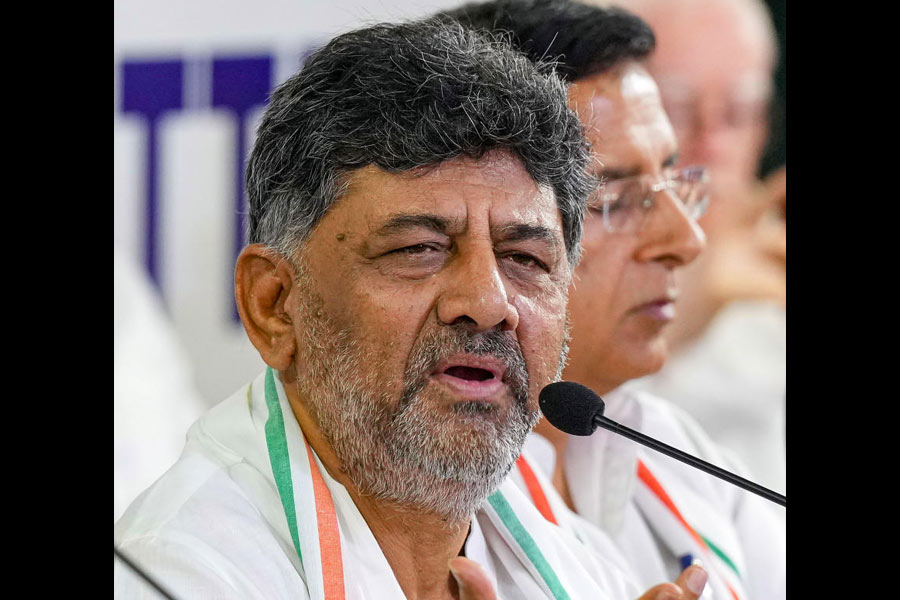The presidential race appears to be hurtling towards a photo finish, with the final set of polls by The New York Times and Siena College finding Vice-President Kamala Harris showing new strength in North Carolina and Georgia as former President Donald J. Trump erases her lead in Pennsylvania and maintains his advantage in Arizona.
It has been decades since the polls have shown the nation facing a presidential race that is so close across so many states in both the Sun Belt and the Rust Belt. The tightly contested landscape means the race remains highly uncertain as the campaign enters its final hours.
Harris is now narrowly ahead in Nevada, North Carolina and Wisconsin, the polls show, while Trump leads in Arizona. The polls show them locked in close races in Michigan, Georgia and Pennsylvania. But the results in all seven states are within the margin of sampling error, meaning neither candidate has a definitive lead in any of them.
Both candidates have multiple pathways available to capture the 270 Electoral College votes required to claim victory, assuming that polls are not dramatically underestimating the support for one or the other. In such a close race, even a small systemic polling error could tip the contest decisively in either direction.
But there are signsthat late deciders are breaking for Harris: Among the 8 per cent of voters who said they had only recently decided on their vote, she wins the group by 55 per cent to 44 per cent. (With Election Day nearing, 11 per cent of voters remained undecided or persuadable, down from 16 per cent abouta month ago.)
The polling comes as more than 70 million Americans have already voted, according to the University of Florida Election Lab.
Roughly 40 per cent of those surveyed by the Times/ Siena poll across theseven states said they had voted. Harris wins those voters by a margin of eight percentage points, the polls found. Trump has an edge among voters who say they are highly likely to vote but have not yet cast a ballot.
Trump has been gaining ground in Pennsylvania, where Harris had a four-percentage-point edge in all previous New York Times/Siena College polls in the state since she entered the race. The race is now tied, indicating an increasingly competitive contest in the state, which strategists in both campaigns believe could tip the election.
William Renfro, an electrical utility student from Las Vegas working as a part-time barista, said he considered himself a libertarian. “Fiscally, I’m more conservative,”he said. “Socially, I’mmore liberal.”
He said he had decided to support Harris because he was troubled by the way Trump had pushed falsehoods about Haitian migrants in Ohio eating dogs and cats, made inflammatory statements, and appeared with Laura Loomer, a far-Right activist. “But when you have, you know, with that Laura Loomer thing, and then stuff about the Haitian migrants in Ohio,” he said, “it’s very ‘Why do I want this person to lead the country thatI live in?’”
Rates of early voting are particularly high in North Carolina, where more than half the voters said they had already cast a ballot. Harris wins early voters in the state by 8 percentage points, perhaps contributing to her three-percentage-point edge in the survey of the state.
Despite recent devastation there from Hurricane Helene, more than nine out of 10 North Carolina voters said the storm and its aftermath have had no impact at all on their ability to vote.
The only state where the poll found Trump winning with people who said they had already voted was Arizona. Forty-six per cent of voters there said they had already voted, and Trump wins that group, 50 per cent to 46 per cent.
The polls also reveal a shift in the issues being prioritised by voters in the final stretch of the race. The economy still remains their top concern, but in states like Wisconsin, where Harris has held a consistent edge, abortion now nearly matches the economy as voters’ most important issue. In Arizona, where Trump leads, immigration also continues to rise as a crucial issue driving voters’ choices.
Dakota Parrish, 31, who works at an insurance company, said he was supporting Trump because he believes the country was more economically prosperous when he was President.
“It’s not so much about, like, Donald Trump as a person in this case,” said Parris, who lives in Surprise, Arizona. “People could afford more, could live a happier life under the policies that were put in place.”
The survey shows that Trump has continued to hold on to the core of the coalition that supported him in his past two presidential bids — white voters who did not attend college, and men — while expanding his support among younger, nonwhite and newer voters. He is exceeding his 2020 vote share in Arizona and Michigan, both states he did not win four years ago.
Harris is underperforming relative to President Joe Biden’s performance in 2020 with younger voters, Black voters, particularly Black women, and Latino voters. But she has improved on his numbers with these groups since he dropped out of the race in July.
The gender gap remains wide across all seven states, with Harris the favourite of women and Trump preferred by men. For women and younger voters, abortion now surpasses the economy as the most important issue driving votes.
Along with the presidential campaign, the race for control of the Senate has also tightened. In all three Northern “blue wall” states, the Democratic advantage is notably diminished in the final days of the campaign.
All the Democratic candidates for Senate are outperforming Harris, an indication that a potentially crucial slice of voters may split their tickets by supporting both Trump and the Democratic candidate for Senate in their state.
Democrats currently hold a 51-seat Senate majority, but Republicans are set to pick up a seat in West Virginia after the retirement of Senator Joe Manchin III, an Independent who caucuses with Democrats.
For the Democrats to retain control of the Senate, they must defend their seats in all five races, while also staving off Republican challengers in Ohio and in Montana, where Senator Jon Tester, the incumbent Democrat, is trailing, according to New York Times polling averages of the race. Recent polling shows Democrats may have an opportunity to defeat Senator Ted Cruz, the Texas Republican, though their candidate, Representative Colin Allred, remains a long shot in the race.
Linda Guggia, 46, a real estate agent in Henderson, Nevada, said she backed the abortion rights amendment in her state. But she also voted for Trump, who she believes will be stronger on economic issues.
New York Times News Service











